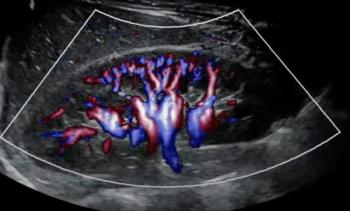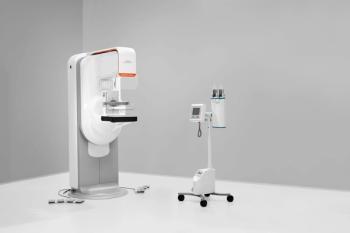Is surveillance imaging via positron emission tomography (PET), magnetic resonance imaging (MRI) or computer tomography (CT) worthwhile for patients after successful radiation therapy for squamous cell carcinoma of the head and neck?
In a retrospective study, recently published in JAMA Network Open, researchers reviewed data from 340 patients (mean age of 59) who had a complete metabolic response after definitive radiation treatment for squamous cell carcinoma in the head and neck. The study authors compared the use of surveillance imaging with PET/CT, MRI, or CT in 187 patients who had no suspicious symptoms or clinical findings versus expectant management, in which imaging was only triggered by symptoms and/or clinical findings, for 153 patients.
For follow-up imaging in the surveillance cohort, 95 percent had PET/CT scans, 19 percent had MRI and 14 percent had CT. In contrast, follow-up imaging in the expectant management group included PET/CT scans for 16 percent, MRI scans in 5 percent and CT imaging for 7 percent of patients.
Out of 51 recurrences in the overall cohort, 32 occurred in the surveillance group and 19 occurred in the expectant management group, according to the study. The study authors found no difference between the surveillance imaging and expectant management groups with respect to overall survival rates (94 percent vs. 93 percent). There was also no significant difference between the groups for progression-free survival rate (89 percent for surveillance vs. 88 percent for symptom/clinical finding triggered imaging) or freedom from distant metastasis (90 percent vs. 90 percent), according to the researchers.
“Our findings that relapses were equally well detected by changes in symptoms and physical examination findings when compared with routine imaging in asymptomatic patients emphasizes the importance of compliance to clinical follow-up,” wrote lead study author Allen M. Chen, M.D., M.B.A., who is affiliated with the Department of Radiation Oncology at Chao Family Comprehensive Cancer Center and the University of California in Irvine, and colleagues.
The researchers noted that 84 patients in the surveillance imaging cohort had follow-up biopsies, which revealed malignant findings in 41 patients and a positive predictive value (PPV) of 49 percent. In contrast, the study authors pointed out that 37 patients in the expectant management group had follow-up biopsies and malignant findings were revealed for 33 patients (a PPV of 89 percent).
Three Key Takeaways
- Comparable survival rates. This study suggests that there is no significant difference in overall survival rates between patients who undergo routine surveillance imaging (PET/CT, MRI, or CT) and those managed expectantly (with imaging triggered by symptoms/clinical findings). Both groups demonstrated similar overall survival rates (94 percent for surveillance vs. 93 percent for expectant management).
- Recurrence detection. The research findings indicate that recurrences were equally well detected by changes in symptoms and physical examination findings compared to routine imaging in asymptomatic patients. This underscores the importance of compliance with clinical follow-up, suggesting that relying on symptoms and physical exams may be as effective as routine imaging in detecting disease recurrence.
- High false-positive rate with surveillance imaging. The study highlights a significant limitation of surveillance imaging, particularly PET/CT, with a high proportion of false-positive findings (positive predictive value, PPV, of 49%). The authors emphasize that factors like tumor regression, anatomical distortion, and post-treatment changes can lead to diagnostic challenges, and prior radiation, chemotherapy, and surgery may contribute to false positives. This suggests a need for careful consideration and interpretation of imaging results in this patient population.
The high proportion of false-positive findings in the surveillance imaging is a key consideration, according to the study authors, who emphasized that prior radiation, chemotherapy, and surgery can lead to anatomical distortion as well as inflammation and infection that can be mistaken for disease recurrence.
“The head and neck, in particular, is impacted by phenomenon, such as tumor regression and alterations in muscle density, fat distribution, subcutaneous edema, and fluid shift, during and after treatment, which can lead to diagnostic challenges,” explained Chen and colleagues.
(Editor’s note: For related content, see “Study Shows Significant Overutilization of Head and Neck CT Angiography in the ER,” “Practical Insights on CT and MRI Neuroimaging and Reporting for Stroke Patients” and “A Closer Look at Ultrasound and MRI Alternatives for Head and Neck Imaging.”)
In regard to study limitations, the researchers conceded the non-randomized nature of the study and the lack of a formal policy for initiating surveillance imaging after initial PET/CT imaging. They also noted the possibility of physician and patient biases with respect to socioeconomic issues and factors related to underlying disease.





























